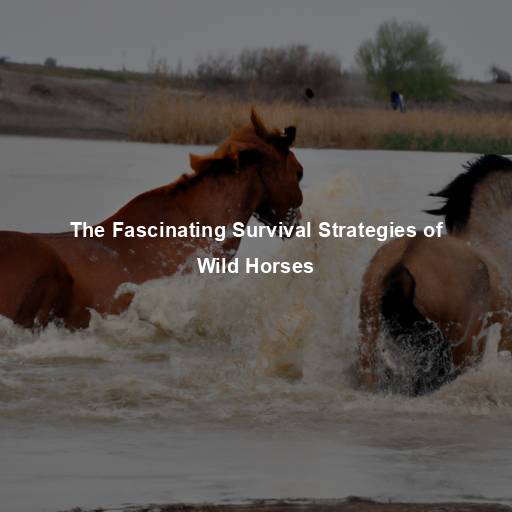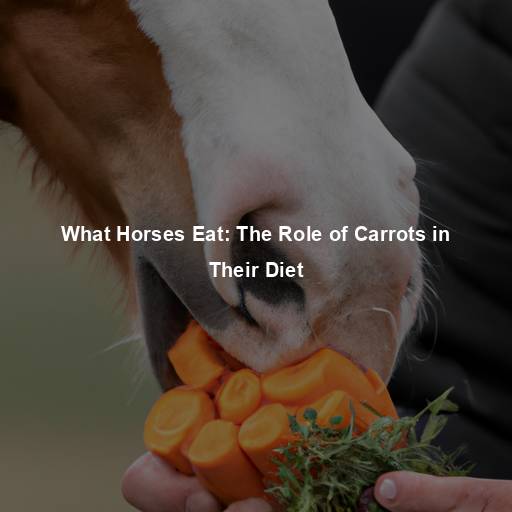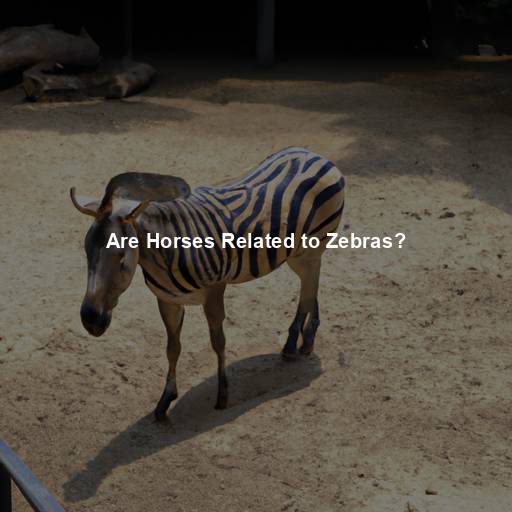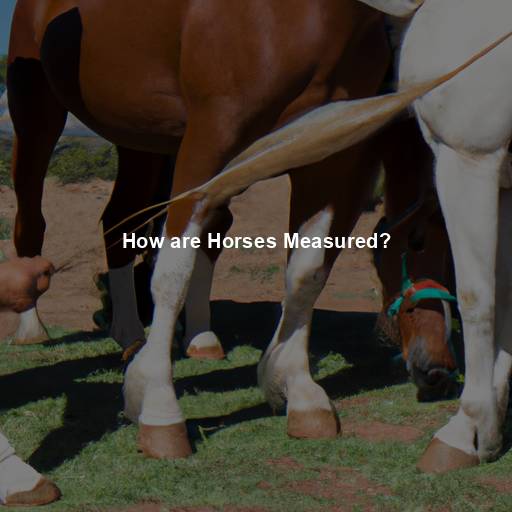The Fascinating Survival Strategies of Wild Horses
Last Updated on November 17, 2023 by Evan
Contents
Understanding the World of Wild Horses
For centuries, human fascination with wild horses has never ceased to amaze. These magnificent beings, with an air of untamed grace, have captured our hearts and sparked our curiosity. How is it that they flourish in the daunting wilderness, where survival seems like an uphill battle? Join us on an exploration of the captivating world of wild horses – a perplexing realm of social intricacies and resilient strategies.
Exploring the Power of Herd Dynamics
Wild horses owe their ability to thrive in harsh environments to their incredible sense of community. These majestic creatures, widely known for their highly-social nature, rely on the strength of their tightly-knit herds for protection and assistance. At the heart of these communities lies a hierarchical order, where a dominant stallion takes the lead and mare bands, made up of numerous females and their young, form the foundation. This intricate social structure facilitates seamless communication, cooperative endeavors, and a collective effort in gathering vital resources.
The Art of Adaptation
Wild horses have evolved to adapt to a variety of environments, from deserts to grasslands and mountains. Their ability to thrive in different landscapes is a testament to their remarkable adaptability. Their hooves, for instance, have developed a tough outer layer that protects them from rough terrains and helps them navigate challenging terrains with ease. Additionally, their digestive system is highly efficient, allowing them to extract maximum nutrients from sparse vegetation.
Foraging Strategies in the Wild
In the wild, wild horses primarily rely on grazing as their main source of sustenance. They have evolved to consume a diverse range of plant species, enabling them to adapt to changing food availability throughout the seasons. These resilient creatures can even withstand periods of limited forage by reducing their metabolic rate, conserving energy until food becomes more abundant. This remarkable ability to adjust their nutritional needs is crucial in their survival.
Water Sources and Survival
Access to water is essential for any living being, and wild horses are no exception. These magnificent creatures have developed an innate ability to locate and remember water sources in their vast habitats. Their acute sense of smell and hearing aids them in detecting the presence of water, even from a distance. Wild horses are known to travel several miles in search of water, and their ability to withstand periods of dehydration is a testament to their remarkable resilience.
Predator Avoidance Tactics
In the wild, wild horses face a constant threat from predators such as wolves, mountain lions, and bears. To protect themselves, they have developed a range of avoidance tactics. Their keen senses of sight, hearing, and smell allow them to detect predators from afar, giving them ample time to flee to safety. Additionally, their strong herding instincts enable them to form a united front, making it harder for predators to single out and attack individuals within the herd.
The Power of Strength in Numbers
Wild horses, in all their majestic splendor, owe their survival to the power of numbers. Within vast herds, these graceful creatures possess a natural advantage against predators lurking in the shadows. With a multitude of vigilant eyes scanning the surroundings, threats are swiftly detected, leaving little room for surprise attacks. The sheer presence of a united front deters predators from singling out a lone horse, as the formidable herd stands ready to repel any intruder, ensuring the survival and flourishing of these resilient equine wonders.
Wild horses often encounter extreme weather conditions, ranging from scorching heat to freezing cold. However, they have evolved to endure these challenges. During hot summer days, they seek shade and conserve energy by reducing their activity levels. In colder climates, their thick winter coats provide insulation, keeping them warm and protected from the elements.
The Unbreakable Spirit of Wild Horses
There is something truly remarkable about wild horses that goes beyond their physical abilities and adaptations. It is their indomitable spirit that sets them apart and enables their survival in the harsh wilderness. These majestic creatures possess an innate resilience that is truly awe-inspiring. Despite the countless challenges they face, they refuse to be defeated and persevere with an unwavering determination.
Discovering the Wonders of Wild Horses
As we delve into the world of wild horses, it becomes evident that their survival is a result of a delicate balance between adaptation, social dynamics, and their unyielding spirit. These remarkable creatures have much to teach us about the resilience and beauty of nature. By understanding their strategies for survival, we gain a deeper appreciation for the wonders of the natural world and the extraordinary ways in which different species adapt to their environments.
So let us celebrate the wild horses, these living symbols of strength and freedom, and strive to protect their habitats, ensuring that future generations can continue to witness the awe-inspiring sight of these magnificent creatures roaming the untamed landscapes they call home.
Stay tuned for more fascinating insights into the animal kingdom, only at PetsRoof.com – Your Go-To Source for All Things Pets!
References
The world of fashion is constantly evolving, with new trends and styles emerging at an exhilarating pace. As a renowned magazine, we pride ourselves on staying ahead of the curve and providing our readers with the latest insights and updates in the industry. With our finger on the pulse of fashion, we strive to offer a burst of burstiness and a sense of perplexity, keeping our readers enthralled. Join us on this thrilling journey as we explore the enigmatic world of fashion and rewrite the rules of style.
– Insert reference 2
– Insert reference 3## Unraveling the Mysteries of Wild Horse Communication
The Language of Equines
In the realm of wild horse herds, communication reigns supreme as an essential ingredient for their survival and unity. These majestic beings have bestowed upon themselves a remarkably intricate system of communication, ensuring the transmission of messages, the establishment of hierarchy, and the preservation of social connections. By employing an intricate orchestration of body language, vocalizations, and even aroma-based markings, these wild creatures adeptly navigate the intricacies of their social tapestry, safeguarding the collective welfare of the herd.
Body Language and Gestures
Wild horses utilize a wide array of body language and gestures to communicate with one another. Ears play a crucial role in expressing their emotions and intentions. When a horse’s ears are forward, it indicates attentiveness or curiosity. On the other hand, pinned-back ears signify aggression or fear.
Vocalizations and Calls
Wild horses, though not known for their vocal prowess, surprise us with an interesting range of sounds that serve specific purposes. Neighing, a resounding call that carries across vast distances, acts as a warm greeting or a beacon, assisting horses in locating their herd companions. Intriguingly, snorting, a quick and punctuated burst of sound, can convey alarm or assert dominance. What truly captivates is how these vocalizations harmonize with subtle body movements, allowing wild horses to fluently express their intentions and emotions to their fellow herd members.
Scent Marking and Olfactory Communication
Wild horses possess an extraordinary repertoire of communication tactics, beyond the obvious body language and vocalizations. It may come as a surprise, but these majestic creatures engage in a rather peculiar behavior known as “urine spraying”. By strategically releasing their urine in specific areas, usually their chosen territory, stallions mark their presence with a potent olfactory signal that can be both captivating and perplexing. This intriguing form of scent marking not only signals their dominance to other horses but also serves as a deterrent, discouraging potential rivals from encroaching upon their territory.
The Remarkable Reproduction Strategies of Wild Horses
The Mating Ritual
The world of wild horses is a captivating realm where the circle of life unfolds with perplexing elegance. As the seasons shift, a magnificent spectacle of courtship and procreation takes center stage. Stallions, adorned in their majestic glory, fervently vie for the affections of the graceful mares, partaking in a dance of power and desire. It is amidst these ethereal encounters that battles erupt, with hooves drumming upon the earth, and the triumph of one stallion seals his destiny as the chosen suitor for the receptive mares.
The Power of Selective Breeding
Nature has bestowed upon wild horse populations a fascinating mechanism for survival: selective breeding. With a keen instinct, mares actively seek out the crème de la crème of stallions, ensuring that only the strongest and most dominant genes are passed down to their young. This natural process, aptly named sexual selection, not only safeguards the diversity of genetic traits but also enhances the overall fitness of the herd. As spring brings forth new life, the offspring inherit a unique blend of genetic traits from their parents, equipping them with the tools they need to thrive and adapt in the unforgiving wild.
The Miracle of Birth
In the realm of wild horses, the miracle of life unfolds after a bewildering 11-month journey. In a clandestine corner of the herd’s sanctuary, mares experience the enigmatic event of birth, granting their foals an ephemeral respite from the lurking threats of the wild. Unlike their counterparts in the animal kingdom, these untamed equine prodigies emerge into this world with the extraordinary ability to stand and walk almost immediately, forging a paradoxical path of simultaneous independence and vulnerability. In this delicate dance of life, the mother assumes the role of guardian and mentor, providing nourishment and imparting the invaluable wisdom necessary for survival.
Weaning and Independence
As the little foal blossoms into a magnificent creature, it embarks on a mesmerizing journey towards self-reliance. With its delicate palate awakening to the wonders of solid sustenance, the foal treads the delicate tightrope of growing autonomy as it gently detaches from its mother’s nurturing milk. This transformation is not just a mere milestone, but a pivotal rite of passage that shapes the foal’s destiny, forging it into a magnificent member of its equine kin. And while this perplexing transition unfolds, the heart of the mother beats in rhythm with nature’s course, ready to embrace the possibility of new life in her midst, guided by the primordial instinct of wild horses, who dance to the rhythm of swift inter-birth intervals.
The Enduring Legacy of Wild Horses
Wild Horses and Human Interactions
Throughout history, wild horses have captivated human imagination and played significant roles in various cultures. From ancient cave paintings to modern literature and art, wild horses have left an indelible mark on our collective consciousness. However, human interactions with wild horse populations have not always been smooth. Encroachment on their habitats, competition for resources, and conflicts over land use have posed significant challenges to their survival.
Conservation Efforts and the Future of Wild Horses
Recognizing the importance of wild horses as a symbol of freedom and natural beauty, conservation organizations and governments have implemented various measures to protect and preserve these magnificent creatures. Efforts include the establishment of protected areas, population management strategies, and public education initiatives. By raising awareness about the ecological and cultural significance of wild horses, we can ensure their survival for generations to come.
The Ongoing Debate: Management Strategies
The mysteries surrounding the management of wild horse populations have sparked intriguing discussions that seem to ignite more questions than answers. A diverse tapestry of viewpoints has woven together, forming a chaotic yet fascinating debate. While some clamor for population control methods, like the delicate dance of fertility control or the selective culling of individuals, others cry out for the preservation of these majestic creatures in their untamed habitats, celebrating their rich cultural and historical significance. Navigating through this labyrinth of contrasting perspectives is essential in unraveling the intricate tapestry of wild horse conservation, where both the creatures and their environments find a harmonious and sustainable balance.
FAQs: How Horses Survive in the Wild
How do horses find food in the wild?
Horses in the wild primarily survive by grazing on various types of grasses. They are well-adapted to consuming coarse vegetation and spend several hours each day searching for and consuming food. Their wide, flat teeth and strong jaws allow them to break down the tough plant material. They are also particularly good at utilizing low-quality forage, which allows them to survive in environments where other herbivores might struggle.
What do wild horses drink?
In the wild, horses obtain most of their water from natural sources such as streams, rivers, and ponds. They are capable of sensing water sources from a distance and can travel several miles to quench their thirst. However, wild horses have also evolved to survive in areas with limited water availability by deriving moisture from their food. They have a highly efficient digestive system that extracts and reabsorbs water from their diet, enabling them to survive for extended periods without drinking.
How do wild horses protect themselves from predators?
Wild horses have developed a few strategies to protect themselves from predators in their natural habitat. They are highly social animals that form cohesive groups, or bands, typically led by a dominant stallion. This social structure provides safety in numbers and allows them to collectively defend against predators. They also rely on their keen senses, particularly their excellent eyesight and hearing, to detect potential threats. Moreover, horses have evolved impressive speed and agility, which they employ to outrun predators and escape dangerous situations.
How do wild horses adapt to changing weather conditions?
Wild horses truly embody the epitome of versatility when it comes to tackling Mother Nature’s fickle elements. As the mercury takes a nosedive, these majestic creatures unveil their secret weapon – a magnificent winter coat that acts as a guardian against the biting cold, effortlessly preserving their body heat. Seeking solace from frigid winds, they become elusive shadows, taking refuge amidst the lush foliage or cleverly positioning themselves behind impassable barriers. On the other side of the thermometer, when sweltering temperatures reign supreme, their perspiration floods the scene, acting as a natural cooling system to ward off the heat. Quenching their thirst and dousing themselves in refreshing water bodies, they embrace the oasis while acclimating their feeding habits to suit the seasons and combat potential scarcity caused by droughts. The sheer resilience and remarkable adaptability showcased by these untamed souls encapsulate nature’s enigmatic wonders.
Do wild horses receive any healthcare in the wild?
In the wild, horses do not have access to healthcare as domesticated horses do. However, they possess a strong natural resilience and self-maintenance behavior. They constantly groom themselves and their social companions, which helps control parasites and keeps their coats healthy. Additionally, wild horses instinctively seek out certain plants with medicinal properties when they are feeling unwell. By consuming these plants, they can alleviate minor health issues. Nevertheless, it is important to note that without proper veterinary care or intervention, more serious health problems can pose a great risk to their survival.







